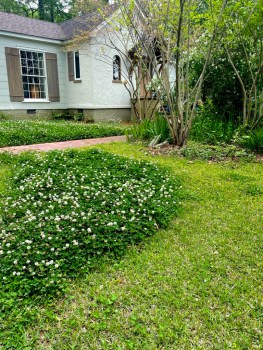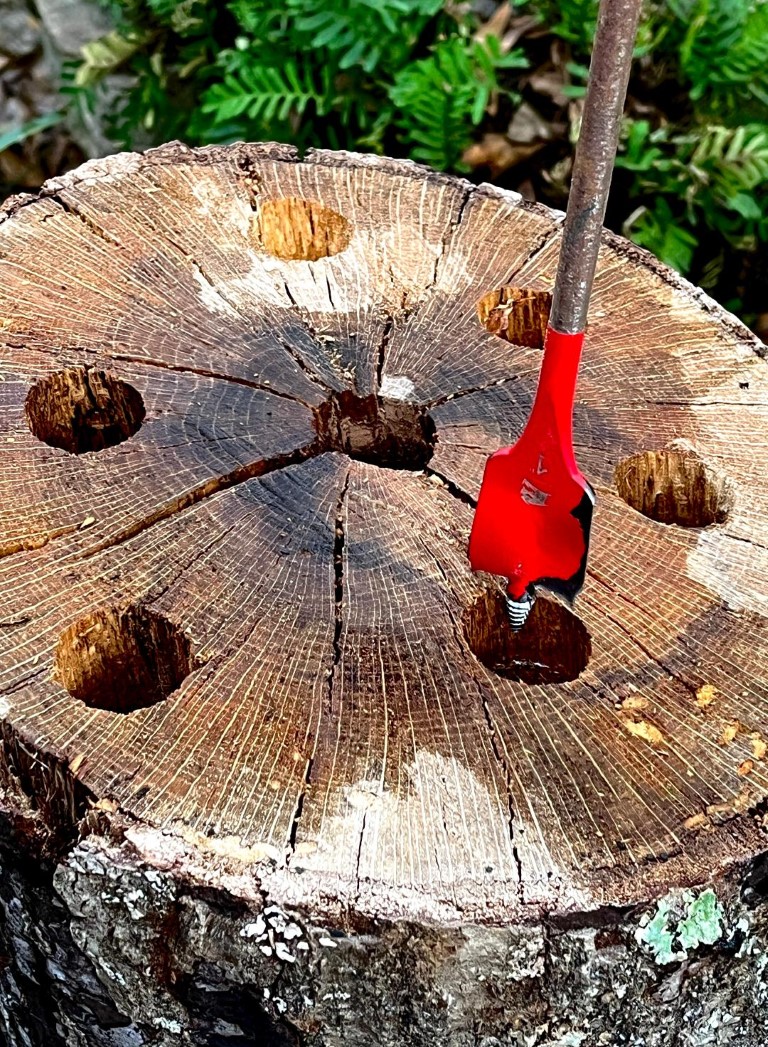Fun alternatives for winter lawn care
Published 9:43 am Friday, October 11, 2024
By Felder Rushing
Gardening Columnist
Do you really want a greener pasture in the front lawn? This month many gardeners overseed summer lawns with ryegrass for looks, or sow white clover for winter pollinators. But there are pros and cons to the lawn.
Benefits include the aesthetics of an all-winter season of emerald green, helping control erosion in a thin summer lawn during our rainy winters and springs, and helping winter bees, butterflies, and other hungry pollinators. Ryegrass is also exciting in the winter in areas too shaded for sun-loving summer grasses. And adding clover makes the other winter weeds seem more like wildflowers.
Plus, it can be fun. Last summer my son completed a big landscape project leaving a large bare area that was most likely going to wash away in the winter. With not enough time to get a new lawn started before frost, he decided to sow ryegrass and clover to have a sea of green rather than a river of mud.
After sowing a pound of white clover seed and ten pounds of perennial ryegrass seed per one thousand square feet he lightly spritzed the area every day with water to speed germination, and in less than two weeks it was mostly sprouted and growing.
With some mowing it looked and worked great, and over the winter the plants grew deep roots which in turn provided paths for the roots of this spring’s new lawn. The clover also converted nitrogen fertilizer from thin air and stored it for use by the new spring lawn.
I convinced him to let me, and his three-year-old daughter have a little fun with it, using little marker flags to guide his lawn care guys into mowing around a small circle and some curved strips, which created an interesting yin-yang look plus a loop for my granddaughter to run around on pretty days and pick flowers and watch bees, butterflies, and rabbits. If you can’t have a little fun with the lawn, what’s the point? (Caveat: watch out for hidden dog poop.)
By the way, when my children were young, we used a hand-held sprayer filled with blue food coloring and water to outline a temporary labyrinth on the lawn they could run around; after just a couple of mowings it was gone, but it sure was fun for us all while it lasted.
Back to overseeding. If you have an existing lawn that is thin or weedy from not being mowed too low, a lack of fertilizer, or you’re choosing to not water every couple or three weeks during dry months, it can be good to throw out ryegrass or clover this fall, and then simply mow it close in April so the lawn can green up stronger.
However, if you have a healthy, thick lawn, overseeding can damage it. A minor concern is how it can reduce air circulation leading to diseases, but the worst and most likely problem is from how in the spring the overseeded stuff plants grow rapidly and will shade out the new growth of the summer lawn. This seriously delays the crucial “spring transition” during which the summer lawn jump starts its new root growth.
In short, overseeding a healthy lawn can seriously thin and weaken it in the spring. You can get around this by mowing the rye or clover when your neighbors’ lawns start showing green in late March or early April.
Your call, and now is the time if you go with overseeding. But think twice about balancing the beauty and bees of winter rye or clover with potential problems to next summer’s lawn.
Felder Rushing is a Mississippi author, columnist, and host of the “Gestalt Gardener” on MPB Think Radio. Email gardening questions to rushingfelder@yahoo.com.







